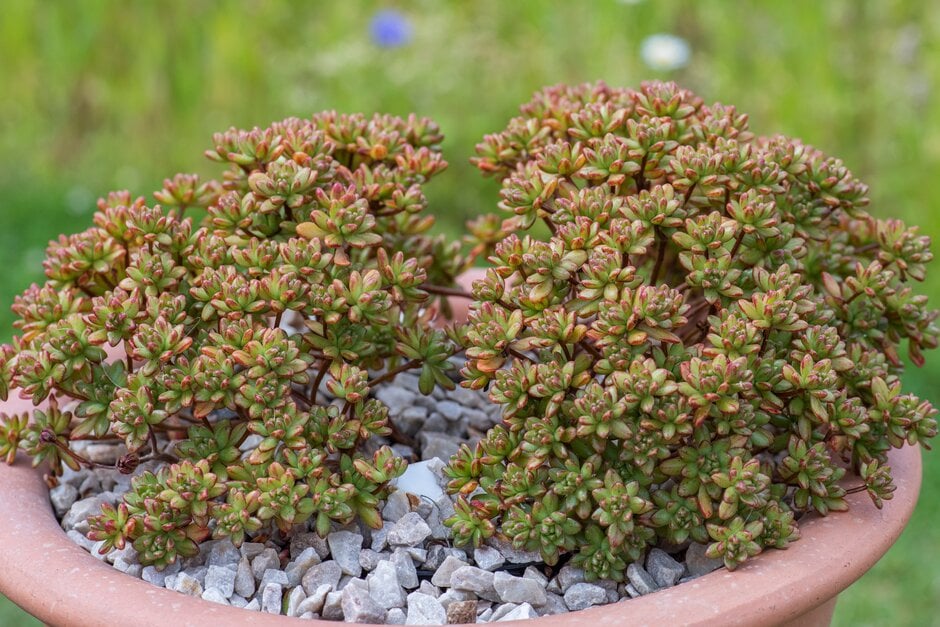Aeonium sedifolium
dwarf aeonium
A succulent evergreen subshrub, with densely branching stems tipped with rosettes of fleshy, club-shaped, yellow-green leaves finely edged with red. Mature rosettes produce spikes of small yellow flowers in spring

Buy this plant
Size
Ultimate height
0.1–0.5 metresTime to ultimate height
5–10 yearsUltimate spread
0.1–0.5 metresGrowing conditions
Moisture
Well–drainedpH
Acid, Alkaline, NeutralColour & scent
| Stem | Flower | Foliage | Fruit | |
| Spring | Yellow | Yellow Green Red | ||
|---|---|---|---|---|
| Summer | Yellow Green Red | |||
| Autumn | Yellow Green Red | |||
| Winter | Yellow Green Red |
Position
- Full sun
- Partial shade
Aspect
South–facing or West–facing
Exposure
ShelteredDrought resistance
Yes Hardiness
H1CBotanical details
- Family
- Crassulaceae
- Native to GB / Ireland
- No
- Foliage
- Evergreen
- Habit
- Bushy
- Genus
Aeonium are evergreen succulents often of shrubby habit, with fleshy leaves in terminal rosettes on the shoots, and racemes or panicles of small, star-shaped flowers with numerous narrow petals
- Name status
Correct
- Plant range
- Canary Islands
How to grow
Cultivation
Best grown in containers, in a free-draining medium in part shade or bright filtered light. Water moderately when in growth, not at all when dormant, and feed 2 or 3 times during the growing season. Overwinter in a greenhouse, conservatory or indoors. See houseplant cacti and succulent cultivation for further information
Propagation
Propagate by stem cuttings, kept at 18°C and barely moist until rooted
Suggested planting locations and garden types
- Houseplants
- Patio and container plants
- Conservatory and greenhouse
Pruning
No pruning required, though stems can be tipped during the growing period to promote a bushy habit
Pests
Diseases
Generally disease-free
Love gardening
Sign up to receive regular gardening tips, inspiration, offers and more
View our Privacy Policy
Get involved
The Royal Horticultural Society is the UK’s leading gardening charity. We aim to enrich everyone’s life through plants, and make the UK a greener and more beautiful place.